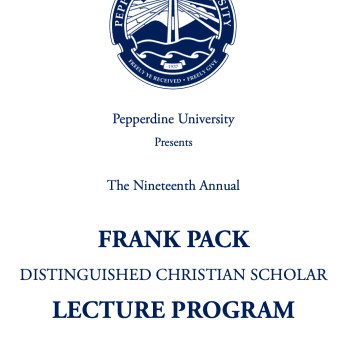Scholarly apetite for researching and debating about Paul’s letter to the Romans is voracious. How can anyone keep up? Short answer: you can’t. So don’t try. But there are ways to stay up to date on scholarship. Commentaries are good resources for that. Articles sometimes offer overviews of current research. Well, luckily in the case of Romans, SBL recently published a collection of essays on Romans that makes accessible to non-specialists the ideas and contributions of a number of key NT scholars.
 Jerry Sumney: “Reading the Letter to the Romans.”
Jerry Sumney: “Reading the Letter to the Romans.”
Mark Nanos: “To the Churches within the Synagogues of Rome.”
Andrew Das: “The Gentile-Encoded Audience of Romans: The Church outside the Synagogue.”
Sylvia Keesmaat: “Reading Romans in the Capital of the Empire”
Katherine Grieb: “The Righteousness of God in Romans”
Joel Green: “Atonement Images in Romans”
Francis Watson: “The Law in Romans”
Rodrigo Morales: ” ‘Promised through His Prophets in the Holy Scriptures’: The Role of Scripture in the Letter to the Romans”
James Dunn: “Adam and Christ”
Ann Jervis: “The Spirit Brings Christ’s Life to Life”
Elizabeth Johnson: “God’s Covenant Faithfulness to Israel”
Caroline Johnson Hodge: ” ‘A Light to the Nations’: The Role of Israel in Romans 9-11″
Victor Furnish: “Living to God, Walking in Love: Theology and Ethics in Romans”
Notes
Since these scholars mostly distill and summarize their own contributions to Pauline theology and the study of Romans, I am not going to summarize each essay. This review will simply offer some “notes of interest.”
Nanos on church life: His wider argument is that the “churches” in Rome were not meeting completely independent of the synagogue. They met as a sub-set within the synagogal Jewish ambit. One excellent point Nanos makes regards the knowledge and use of Scripture in the churches.
If these non-Jews attended Jewish communal meetings, they would hear the Scriptures read, translated, interpreted in regular, weekly sermons. Or are we to suppose that Paul expected those raised on Greek and Roman stories (but not those of the Bible) were meeting in households independent of Jewish communal affiliation, and that each already possessed these expensive scrolls (or had attendees who already knew them well enough from earlier exposure that they could now recite and explain them)? (21)
Righteousness as Covenant Faithfulness: Many of the essay contributors seem very comfortable equating Paul’s language of God’s righteousness with God covenant faithfulness. One can see the influence of Kaesemann, Hays, and Wright in this regard. Obviously Grieb’s book The Story of Romans has introduced this concept to a wider audience.
dikaiosyne and justice. In a number of essays, there is a concern from the contributors to associate dikaosyne (normally translated as “righteousness”) with the language of “justice.” I think this is a wise association, but how should this be expressed in translations? “Covenantal justice”? “Righteousness and justice”?
Keesmaat and Empire. Keesmaat makes a thoroughgoing case for seeing Paul’s letter as anti-imperial or theopolitical. She is obviously siding with Tom Wright in this and even makes it a point to argue against John Barclay (someone who is quite skeptical about reading hidden messages against caesar in Paul’s letters). Keesmaat’s way of discussing this matter involves a conversation with an imaginary person. I did not find this the best method for conveying her message, but her footnotes and bibliography are worth chasing up if this subject appeals to you (as it does to me!).
Jervis and the Spirit? Ann Jervis’ cogent essay entertains the possibility that one of the reasons Paul wrote to the Romans is to teach them about the work of the Holy Spirit. If he is building solidarity in the first few chapters with what the Romans already know about the gospel, then, for Jervis, it is especially instructive that Paul barely mentions the Spirit until the fifth chapter. This suggests “that his hearers (being converted by someone other than himself) do not know the critical connection between the gospel of Jesus Christ’s death and resurrection and the Spirit” (140).
Annotated Bibliographies – for me, one of the most attractive features of the book is the annotated subject-focused bibliographies at the end of each chapter. This helps guide the reader towards deeper study, with extra information about the significance or argument of each entry.
Texts of Interest: It should be of no surprise that Rom 1:17-18, 3:21-31, and 9-11 are discussed by many of the contributors. It was more remarkable to me that Rom 1:3-4 figured prominently in several essays; but clearly it is important insofar as it is focused on the exalted identity of the Son of God.
Final Word: Again, a nice collection. This book will not dazzle those who want to read something new. Rather, this introduces good scholarship on Romans to those who have not kept up to date in the last 15-20 years.















